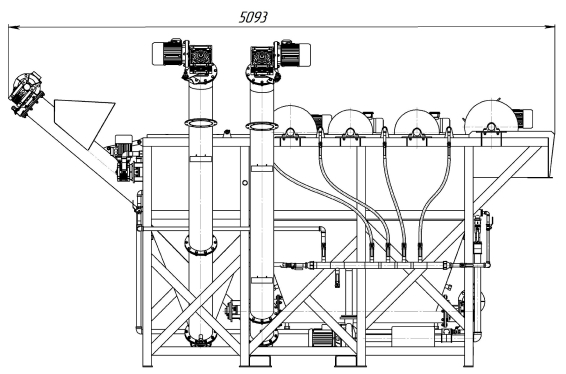
SINK/FLOAT SEPARATION TANK FOR HDPE, LDPE AND PP PLASTIC WASTE RECYCLING
-
Designed for cleaning and separation of materials with different relative densities.
-
Three stages of washing and separation in one process.
-
It can work with both film and rigid plastic waste. Configurable for specific tasks. It can work as part of various technological lines.


